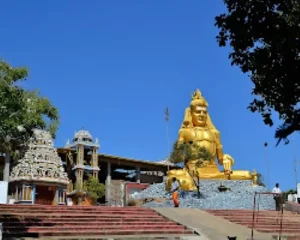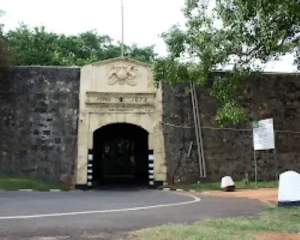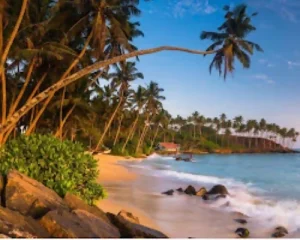Trincomalee is a captivating coastal city located in the eastern part of Sri Lanka, nestled along the shores of the Indian Ocean. With its picturesque beaches, historical landmarks, and cultural richness, Trincomalee has been an alluring destination for travelers seeking a unique and enriching experience. This article delves into the multifaceted charm of Trincomalee, exploring its history, natural wonders, cultural heritage, and the various attractions that make it a must-visit destination.
beaches, historical landmarks, and cultural richness, Trincomalee has been an alluring destination for travelers seeking a unique and enriching experience. This article delves into the multifaceted charm of Trincomalee, exploring its history, natural wonders, cultural heritage, and the various attractions that make it a must-visit destination.
Trincomalee, also known as Gokanna or Thirukonamalai, has a rich history dating back over two millennia. The city has been an essential maritime and trading hub, attracting various civilizations due to its strategic location on the ancient Silk Road. It has been a significant port for traders from China, India, Persia, and Arabia, making it a melting pot of diverse cultures and traditions.
During the colonial era, Trincomalee changed hands several times between the Portuguese, Dutch, and British. Each colonial power left its mark on the city, evident in the architecture and historical monuments that still stand today. The city’s history also reflects the country’s colonial struggles, including the local resistance against foreign rule.
One of Trincomalee’s primary draws is its stunning natural beauty. The city is blessed with pristine beaches, lush vegetation, and breathtaking landscapes. Nilaveli Beach, located about 16 kilometers north of Trincomalee, is a prime example of the city’s picturesque coastal offerings. With its soft, white sands and crystal-clear waters, Nilaveli Beach is an ideal spot for sunbathing, swimming, and water sports.
blessed with pristine beaches, lush vegetation, and breathtaking landscapes. Nilaveli Beach, located about 16 kilometers north of Trincomalee, is a prime example of the city’s picturesque coastal offerings. With its soft, white sands and crystal-clear waters, Nilaveli Beach is an ideal spot for sunbathing, swimming, and water sports.
Another natural wonder in Trincomalee is Pigeon Island National Park, situated just off the coast. This protected marine sanctuary boasts vibrant coral reefs and diverse marine life, making it a paradise for snorkelers and scuba divers. Exploring the underwater world around Pigeon Island reveals a mesmerizing array of colorful fish, sea turtles, and other marine creatures.
Kanniya Hot Springs, a cluster of seven natural hot water springs, is another natural attraction in Trincomalee. Visitors can enjoy a therapeutic soak in these warm waters, which are believed to have healing properties.
Trincomalee is a city steeped in cultural heritage, and this is evident in its temples, festivals, and traditions. One of the most significant religious sites in the area is the Koneswaram Temple, perched on Swami Rock overlooking the ocean. Also known as the Temple of a Thousand Pillars, Koneswaram is a sacred Hindu site with a history dating back to ancient times. The temple has undergone various restorations and remains an essential pilgrimage destination for Hindus from Sri Lanka and beyond.
The Trincomalee War Cemetery is a poignant reminder of the city’s wartime history. This beautifully maintained cemetery honors soldiers from the Commonwealth who lost their lives during World War II. It serves as a solemn site for remembrance and reflection on the sacrifices made during the war.
Festivals in Trincomalee are vibrant and colorful affairs, offering an insight into the local culture and traditions. The Koneswaram Kovil Festival and the Vel Festival are celebrated with great enthusiasm, drawing devotees and tourists alike. These festivals feature elaborate processions, music, dance, and other cultural performances that showcase the city’s rich heritage.
Trincomalee offers an array of attractions and activities to cater to different interests. For history enthusiasts, Fort Frederick, a 17th-century Dutch fort, is a must-visit site. The fort houses the Swami Rock, a vantage point that provides stunning panoramic views of the city and its surroundings.
Water sports enthusiasts will find plenty of opportunities to indulge in activities like snorkeling, scuba diving, and whale watching. Trincomalee’s waters are home to diverse marine life, including the majestic blue whales, which can be spotted during specific seasons.
The nearby Uppuveli Beach is another popular spot for water sports and relaxation. Its calm waters and laid-back atmosphere make it a favorite among tourists seeking a more secluded beach experience.
For those interested in eco-tourism, a visit to the Kanniya Hot Springs and the surrounding lush greenery is a must. Exploring the nearby jungles and wildlife reserves allows visitors to immerse themselves in the natural beauty of the region.
No visit to Trincomalee would be complete without sampling the local cuisine. Being a coastal city, seafood plays a prominent role in the culinary offerings. From fresh fish curries to prawn dishes, the flavors are rich, aromatic, and deeply satisfying. Visitors can also savor traditional Sri Lankan dishes like hoppers, kottu roti, and string hoppers, each offering a unique taste of the island’s culinary heritage.
Trincomalee is undoubtedly a gem on the eastern coast of Sri Lanka, blending history, natural beauty, and cultural richness into a mesmerizing tapestry. Its pristine beaches, historical landmarks, and warm hospitality make it an unforgettable destination for travelers seeking an authentic and immersive experience. Whether exploring ancient temples, enjoying water sports, or simply unwinding on the sandy shores, Trincomalee offers a diverse range of experiences that will leave visitors enchanted and longing to return for more.

OURA Travel operates with the utmost dedication to offering exceptional experiences. While we endeavor to ensure accurate and enjoyable tours, our services are subject to availability and may change without prior notice. We bear no liability for unforeseen circumstances, injuries, or loss during the tours. Booking confirmation is contingent upon availability and adherence to our specific booking conditions, including terms and cancellation policies. Participants are advised to meet health requirements for travel, as we disclaim liability for issues arising from health or fitness limitations. Additionally, our descriptions are aimed at accuracy, although errors may occur, and we reserve the right to rectify any information or pricing inaccuracies.